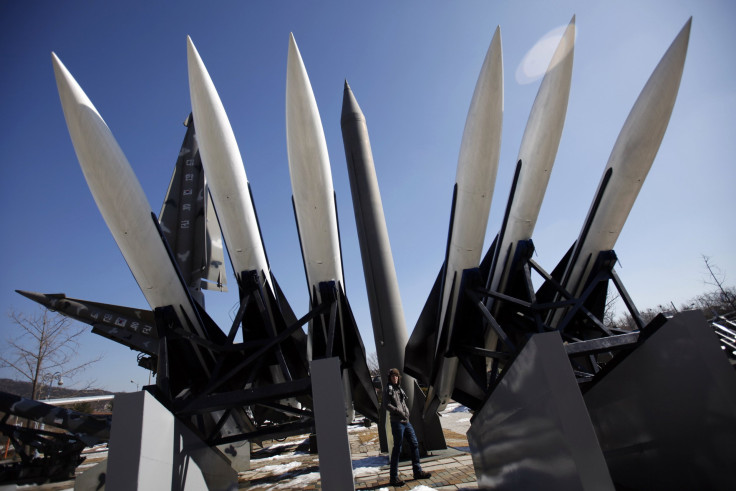South Korea Seeks Indigenous Missile Defense System To Deal With North, Raises 2017 Defense Budget

The South Korean government on Tuesday raised the country’s 2017 defense budget to build a homegrown missile defense system to better counter growing North Korean missile and nuclear threats. The announcement came nearly a week after Pyongyang test-fired a submarine-launched ballistic missile (SLBM) in an apparent response to the annual Seoul-Washington military drill that will continue till Friday.
According to the South Korean Ministry of Strategy and Finance, the allotted defense budget of 40.3 trillion won ($36.1 billion) — up 4 percent from the previous year — for 2017 was proposed to build the country’s own “Korea Air and Missile Defense (KAMD)” system to deal with potential North Korean threats. In addition, some 39.9 billion won ($35.7 million) will be used to equip all military barracks with air conditioning systems, South Korea’s Yonhap news agency reported.
The KAMD, expected to be deployed by mid-2020s, includes medium-range surface-to-air missiles (M-SAM), long-range surface-to-air missiles (L-SAM), U.S. Patriot missiles and early-warning radars to shoot down missiles fired by the Democratic People’s Republic of Korea (DPRK) — the official title for the reclusive nation.
The sped-up efforts to develop the homegrown KAMD comes amid growing tensions in the Korean peninsula after Pyongyang’s fourth nuclear test in January, followed by the launch of a long-range rocket in February.
On Aug. 24, North Korea launched an SLBM from near the coastal town of Sinpo in South Hamgyong province. The projectile, which fell into waters inside Japan's air defense identification zone, flew about 500 kilometers (311 miles) — a distance regarded by the South Korean military as a successful flight.
Last week, Pyongyang also warned of a nuclear strike against Seoul and Washington if the annual military drills, involving South Korean and U.S. troops, show any sign of violence toward its territory.
In addition to developing the KAMD, South Korea also raised spending on its Korea Fighter Experimental (KF-X), the country's development program for homegrown combat aircraft, to 303 billion won ($271.6 million) in 2017 from 67 billion won ($60 million) in 2016, Xinhua reported.
South Korea’s budget for 2017 totaled 400.7 trillion won ($358 billion), up 3.7 percent from the previous year. If approved through the country’s National Assembly, it would surpass the 400 trillion won mark for the first time.
“Increased government spending stimulates the economy and then helps the government have more revenue,” Vice Finance Minister Song Eon-seog said in a statement. “We seek a stronger fiscal policy role in dealing with a downbeat economic cycle.”
© Copyright IBTimes 2024. All rights reserved.












